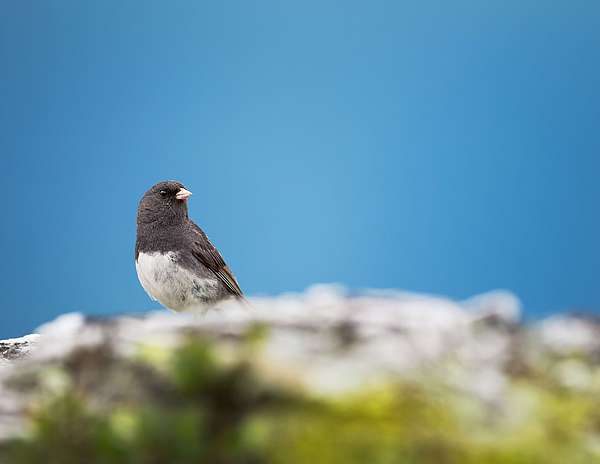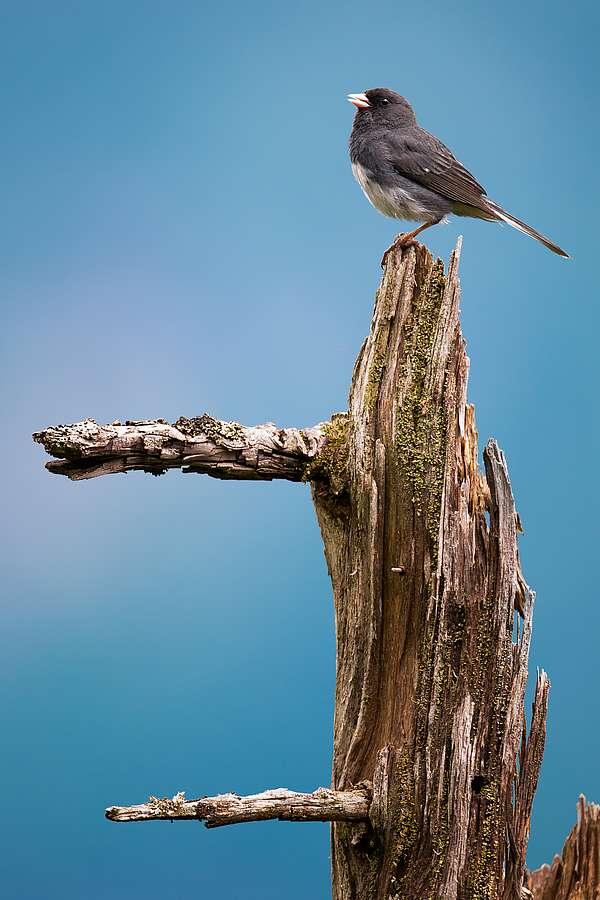by Nicole, AmeriCorps Lands & Trails Steward
Take a close look; you might see flocks of sparrows with white belly plumage and slate-colored backs and wings. During this time of year, you can see dark-eyed juncos in flocks, also known as "blizzards" from evergreen forests to your backyard.
Dark-eyed juncos are also called "snowbirds" because many people believe their presence forecasts the return of winter. After nesting and raising their young in forests at higher latitudes and elevations, dark-eyed juncos arrive in flocks in many parts of the country.
Despite the nickname "snowbird", dark-eyed juncos are present in Stowe throughout the year. The climactic range of this species is quite broad. In Vermont alone, they are found at elevations ranging from 400 feet to 4,000 feet in the Green Mountains.
Dark-eyed juncos that have bred in Vermont are also joined by flocks migrating south from Canada's boreal forests, which can make them more visible in your yard. After a tiring breeding season, these birds face another challenge: surviving the winter. After the breeding season, dark-eyed juncos put aside territorial disputes to increase their chances of survival by flocking together. By this time, dark-eyed juncos also have 30% more feathers by weight compared to the summer months.
Keep an eye out for blizzards. You can often see dark-eyed juncos along woodland edges or in yards, making ticking calls as they fly in and out of bushes. These birds can spend about 65% of their time on the ground and are drab in color, so they stand out on a clean canvas of snow. The plumage of dark-eyed juncos varies between subspecies throughout North America. In Vermont, male and female dark-eyed juncos can most often be distinguished from other sparrows by their lack of streaks or stripes on the wings, back, and head.
Dark-eyed juncos use a variety of habitats in the winter. Places like Wiessner Woods, Trapp Family Forest, and Mayo Farm provide a great opportunity to witness birds and other wildlife brave the winter elements. Your support for Stowe Land Trust's conservation and stewardship efforts helps ensure that there will be "blizzards" for years to come.

